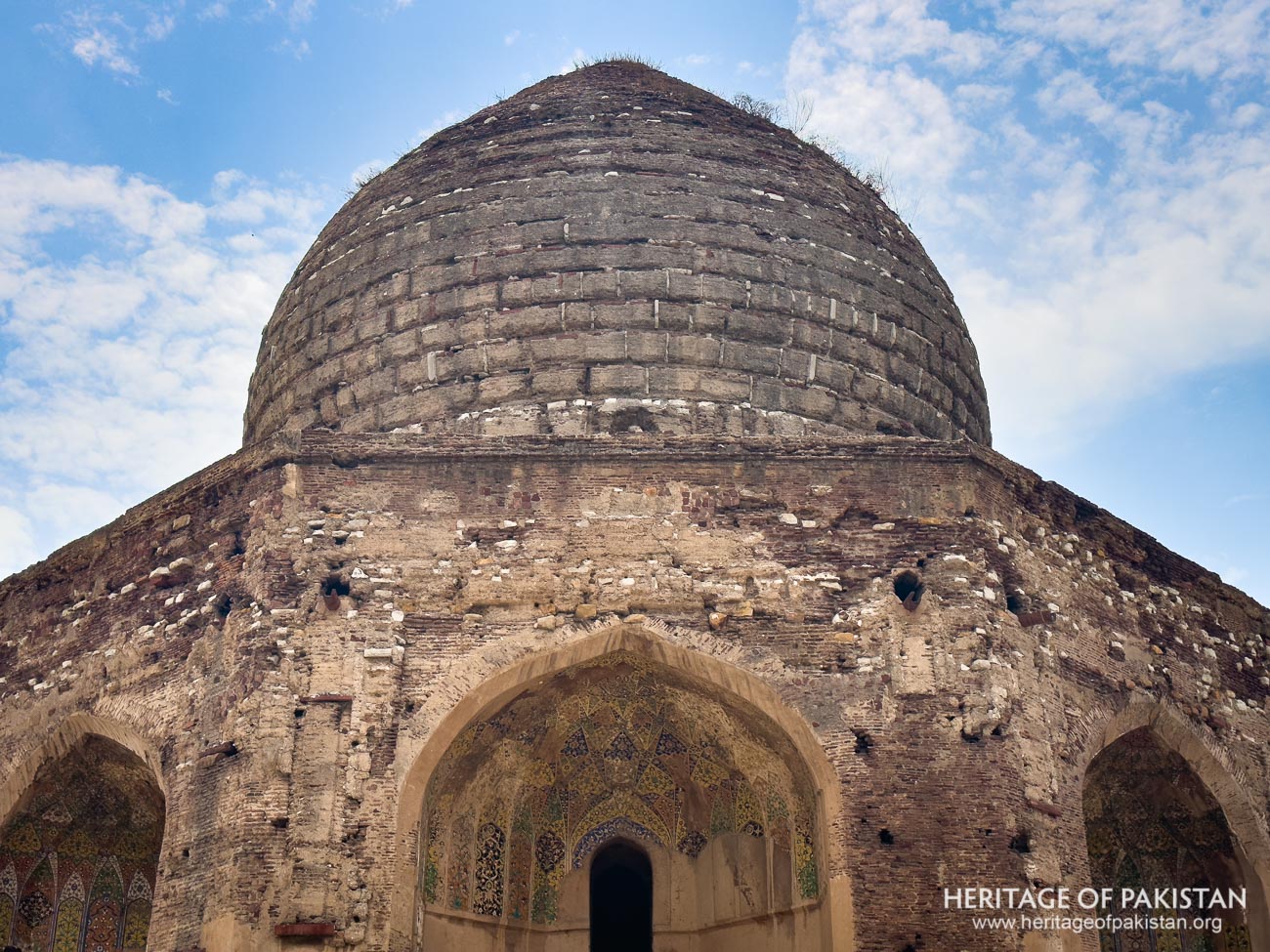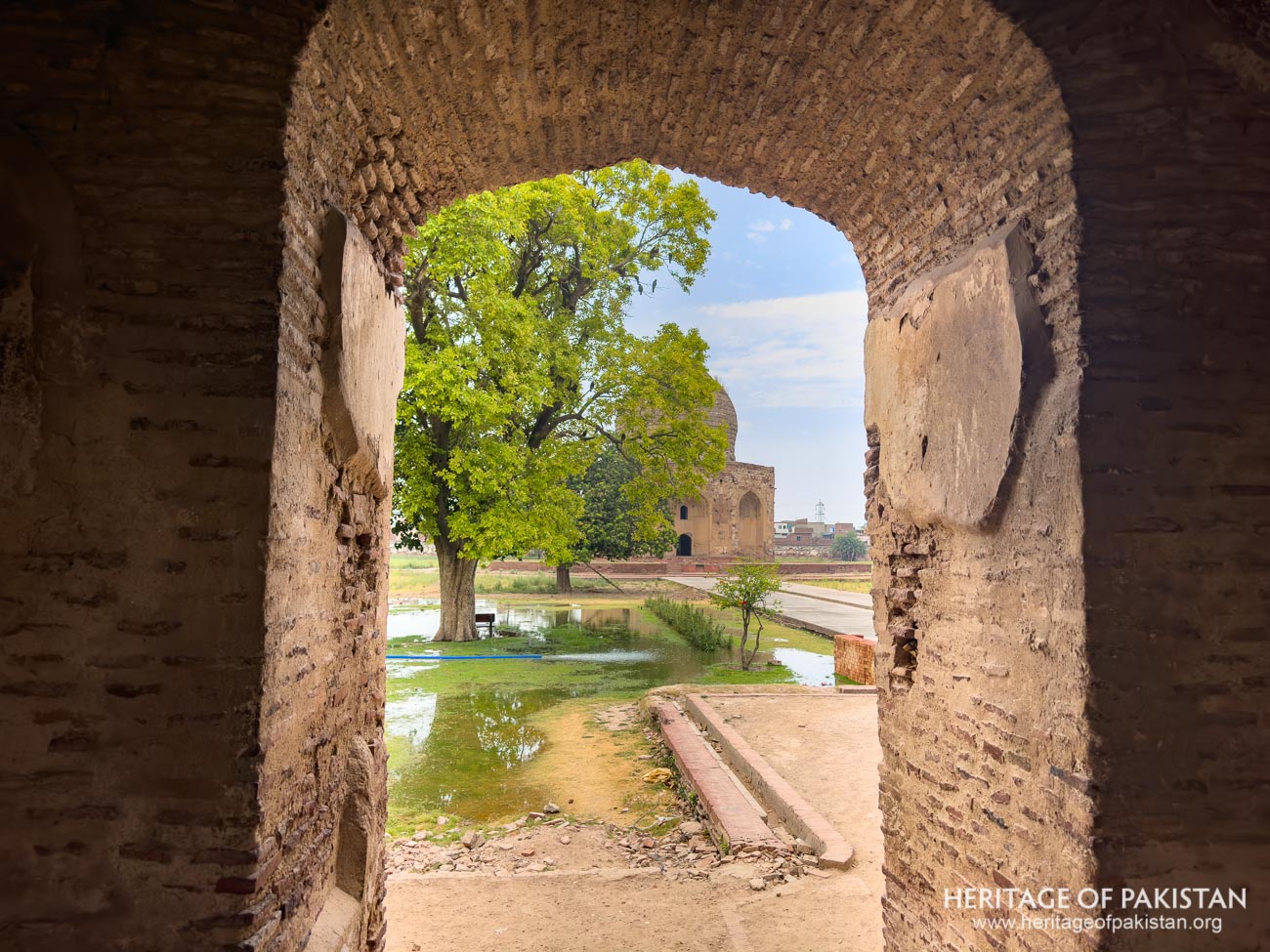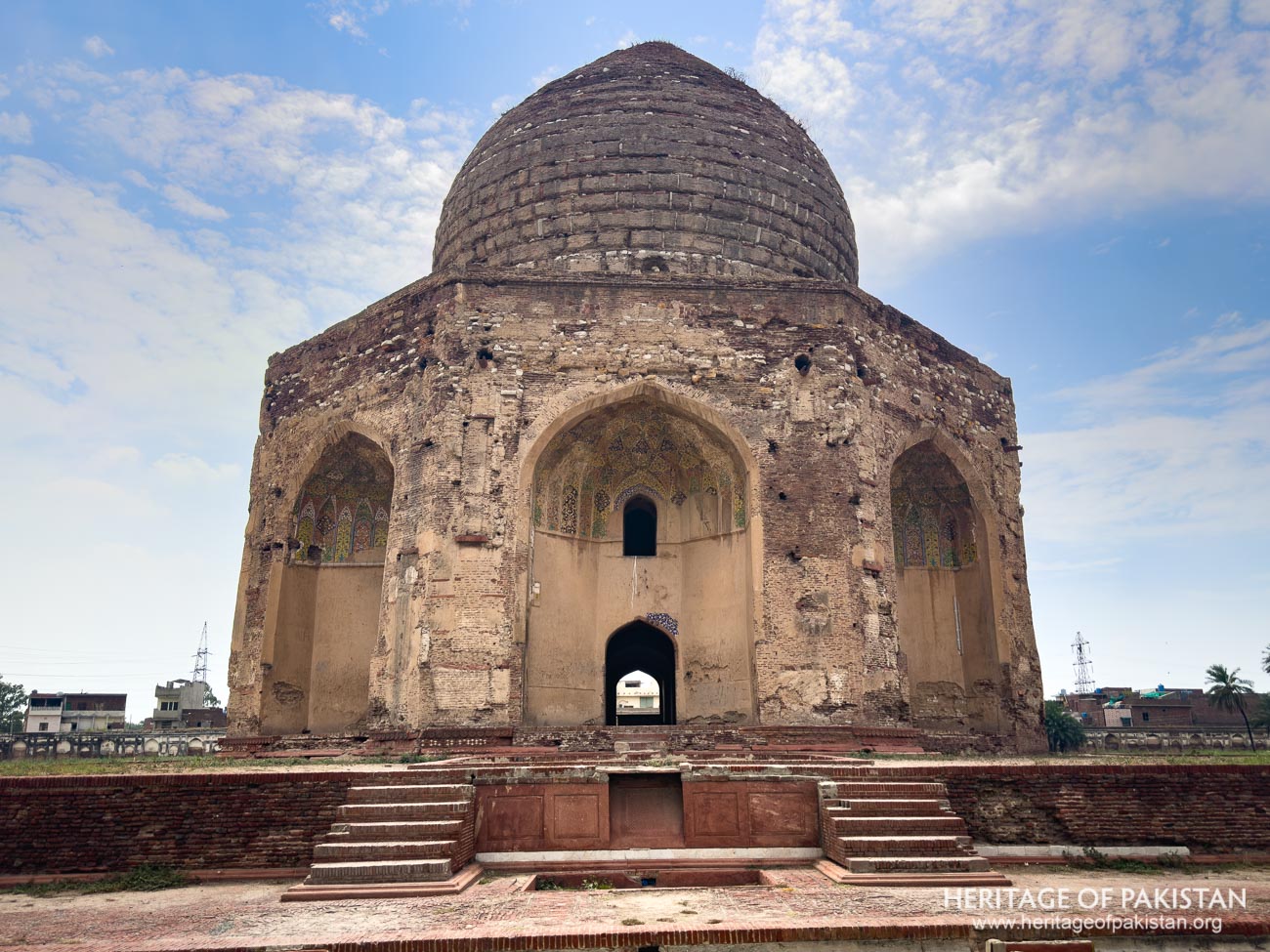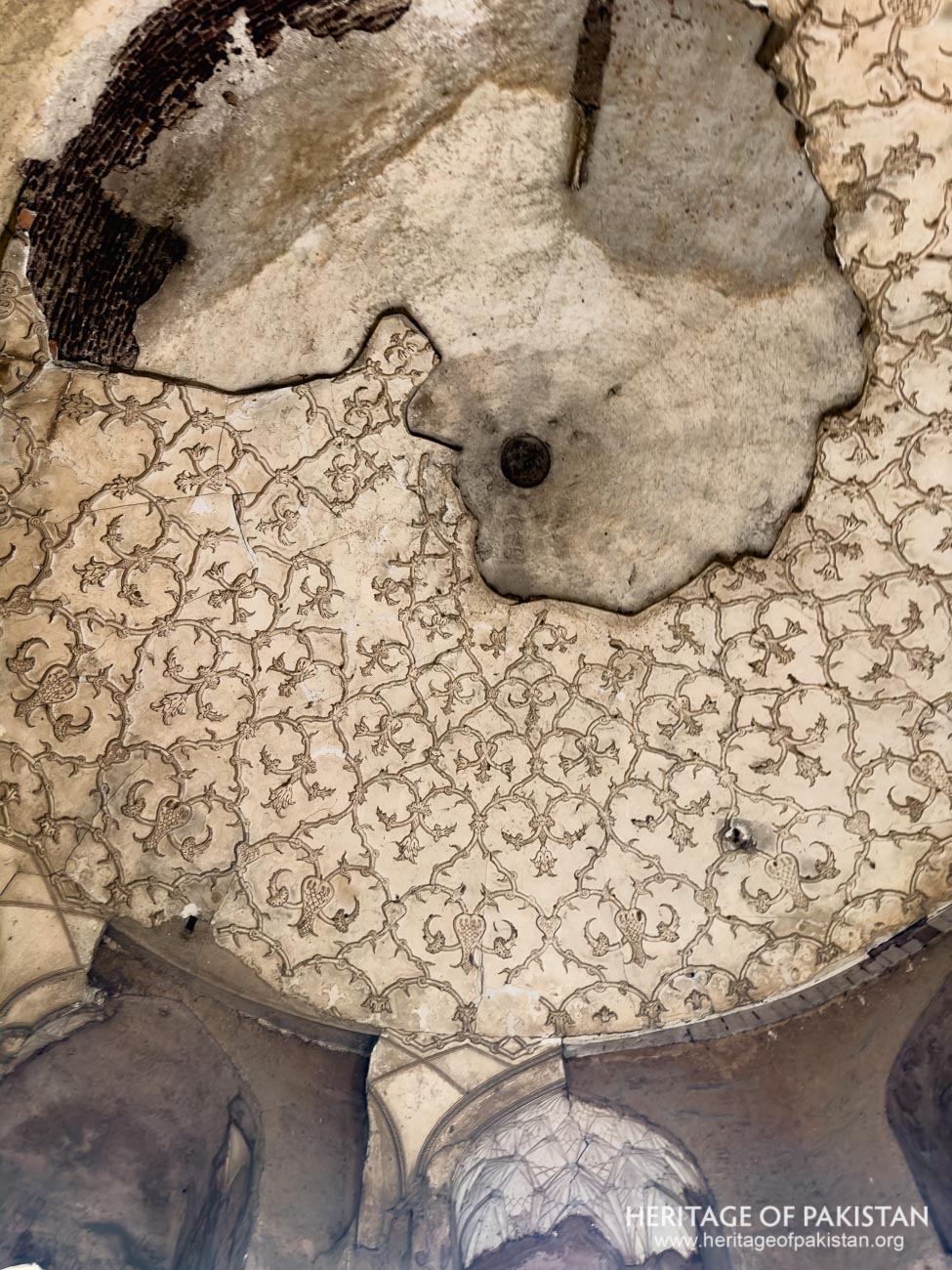Protected Under
Antiquities Act 1975
31°37'21.7"N 74°17'51.5"E
![]()
On the UNESCO World Heritage Site Tentative List
Antiquities Act 1975
The Tomb of Asif Jah once featured ornate marble inlay and floral pietra dura, but much of its decoration was removed during the Sikh era to embellish other structures.
The Best Time to Visit Punjab Province is Year long as it has bearable Cold winters and Hot Summers. However, Summers can get really Hot and precautions are recommended during Daytime visits.


The Tomb of Asif Jah, also known as the Tomb of Asif Khan, is a 17th-century mausoleum located in Shahdara Bagh, in the city of Lahore, Punjab. Situated across the tomb of Emperor Jahangir and on the western side of Akbar Sirai, it commemorates Mirza Abdul Hassan Asif Jah, also known as Asif Khan. Asif Khan was the brother of Empress Nur Jahan, the influential wife of Emperor Jahangir, and the father of Arjumand Bano Begam, famously known as Mumtaz Mahal. Mumtaz Mahal was the beloved wife of Emperor Shah Jahan, for whom the Taj Mahal was built, and both are buried there. Asif Jah served as the Wazir of the Mughal Emperor Jahangir and also remained influential during his successor Shah Jahan’s time.
Centered in a beautiful Char Bagh, the tomb is based on an Octagonal plan and supports a large bulbous dome. The structure has been constructed in brick as well as the dome. The structure was stripped off its ornamentation and cladding materials during the Sikh era. Now only the brick skeleton remains,
Asif Jah, born Mirza Abul Hasan, played a significant role in the politics and administration of the Mughal Empire during the early 17th century. He was a prominent noble and wazir (Grand Vizier) of the Mughal King, holding considerable influence at the time. His sister, Nur Jahan, wielded significant power and used her influence to bolster his career. As a result, Asif Khan was appointed as the governor of various provinces and held high-ranking positions at the Mughal court. In 1625, through Nur Jahan's influence, he obtained the governorship of Lahore. Although he held this position for only two years before Emperor Jahangir's death in 1627, his clan's power rose significantly during this period.
 Tomb of Asif Jah has a large bulbous dome
Tomb of Asif Jah has a large bulbous domeAsif Khan's influence continued into the reign of the fifth Mughal emperor, Shah Jahan. As the Grand Vizier under Shah Jahan, he maintained his status and continued to play a pivotal role in the administration. His daughter, Arjumand Bano,also known as Mumtaz Mahal became the Queen of Emperor Shah Jahan for whom the iconic Taj Mahal, Agra was constructed. Asif Khan was not only a powerful political figure but also a wealthy noble. His salary as Commander in Chief was Sixteen Crores, Twenty Lakh of dams or Rs. 40,50,000. He also had agricultural jagirs which yielded revenue of Five Millions of rupees. He was given command of 9000 personnel and 9000 horses. Shah Jahan bestowed him the title of ‘Yamin-ud-Daula, Khan-i-Khanan,Sipahsalar. His wealth and status were reflected in the grandeur of his tomb, which was constructed by Emperor Shah Jahan at a cost of 300,000 rupees.
Asif Khan died in June 1641 while fighting the forces of the rebel Raja Jagat Singh Pathania. He was accorded high honors in the placement of his tomb, which is located just a few hundred meters to the west of Emperor Jahangir's own tomb. He left a massive fortune of 25 Million rupees, including jewels, gold mohars and silver. On his death Asif Jah’s fortunes were distributed in his 3 sons and 5 daughters which included Rs.25 lakh rupees in cash and other valuables. As per his will his remaining possessions were lapsed into the Royal Crown.
 Entrance of Tomb of Asif Jah from Akbari Sarai
Entrance of Tomb of Asif Jah from Akbari SaraiThe construction of Asif Khan's tomb took four years to complete and is a symbol of the architectural and cultural achievements of the Mughal era. Mulla Abdul Hamid Lahori author of ‘Badshah Nama’ witnessed the construction and completion of the tomb and has described the details.
The tomb of Asif Khan, along with the adjacent Akbari Sarai and the Tomb of Jahangir, is on the tentative list as a UNESCO World Heritage Site. This inclusion underscores the historical and cultural significance of the site. The tomb's architectural design and its location in proximity to other significant Mughal monuments highlight the importance of Asif Khan in the Mughal Empire.

The Tomb of Asif Jah is a great example of Mughal tomb architecture. This tomb lies directly west of the Tomb of Jahangir, forming an axis with Jahangir's tomb that is interrupted by the Akbari Sarai. This spatial alignment highlights the importance of Asif Khan in the Mughal hierarchy and his close association with the imperial family.

The tomb stands in the middle of a large, enclosed garden, which is divided into four squares adorned with walkways, water channels, and trees. This garden, once set with reservoirs and fountains, epitomizes the Persian influence on Mughal garden design, known as Charbagh. Large walls secure the perimeter of the garden. The Tomb of Nur Jahan used to be connected to the garden area of Asif Jah. However, the construction of the railway line disconnected the two. Now, the tomb of Nur Jahan has to be accessed separately from outside.
The tomb itself is an imposing structure with a distinctive octagonal plan, reminiscent of classical Central Asian tomb designs. Similar octagonal planned tombs with Bulbous domes are the most archetypical shrine or tomb design found in parts of Pakistan, especially Sindh. The tomb rests on a raised octagonal platform in the Takht style. The main structure is crowned by a large bulbous dome, which originally featured marble veneering. The whole structure is built in brick masonry including the dome.
The exterior of the tomb was originally adorned with rich stone inlay work, a hallmark of Mughal decorative art. The walls were cladded with red sandstone, and the interior was finished with marble. The walls featured intricate inlay work, which has now disappeared. The interior decoration was equally opulent, with bold stucco tracery, tile mosaic, and ghalibkari (decorative plasterwork). Unfortunately, none of these embellishments remain intact today. During the Sikh rule over Punjab, materials from the tomb were stripped and repurposed for other architectural constructions, leaving only the bare brick structure that stands today. Most of these decorative materials were removed by Ranjit Singh to decorate the temple in Amritsar. Some of the materials were also used in constructing the Baradari in Hazuri Bagh Lahore

The cenotaph of Asif Khan lies in the central chamber of the tomb. Made of marble, it features delicate pietra dura work in floral patterns. The cenotaph is also engraved with the ninety-nine names of Allah in Naksh script, highlighting the intricate craftsmanship and the cultural significance of the tomb. This central chamber and its cenotaph are focal points of the tomb, drawing attention to the final resting place of the noble Asif Khan.
The tomb's architectural design includes a high bulbous dome, which is a prominent feature of Mughal architecture. The outer walls, which were originally cladded with red sandstone, and the interior, once finished with marble and inlay work, have been stripped of their original materials.
There is a mosque that is connected to the Asif Jah’s garden and Akbari Sarai. It was used as a residence during Colonial times. Access to the tomb is restricted, with the main southern gate to the garden permanently closed. Visitors can only enter through a small chamber adjacent to the mosque in the Akbari Sarai.
The tomb of Asif Jah tomb along with the tombs of Jahangir and Akbari Sarai are part of the UNESCO World Heritage Sites tentative list.

Discover the Asif Jah's image gallery and immerse yourself in photographs

All Photographs by Syed Noor Hussain and Sania Azhar.
All Rights Reserved. Photos may be used for Non-Commercial, Educational, Artistic, Research, Non-Profit & Academic purposes.
Commercial uses require licensing agreement.


Add a review